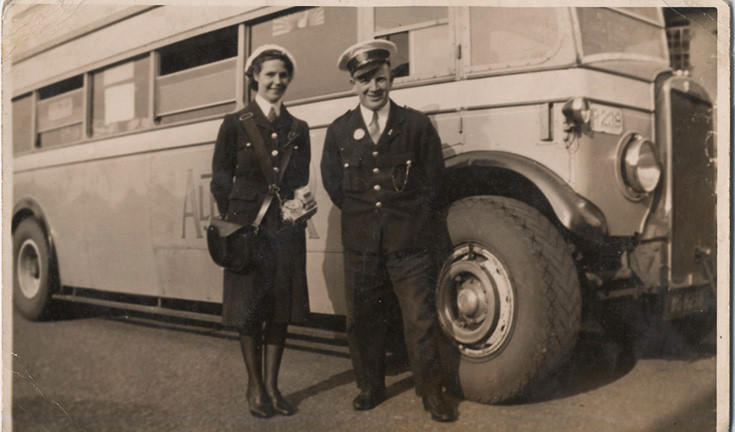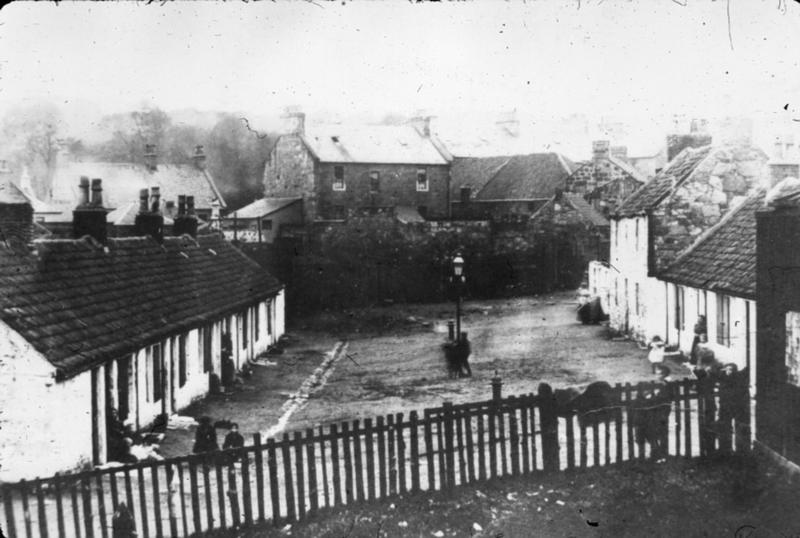Discover the truth about King Arthur’s connections to Camelon!
King Arthur: Fact and Fiction
Currently, there is much debate as to whether King Arthur was an actual historical figure or the product of a creative imagination for literary purposes. It seems likely that it could be a combination of both. King Arthur is a legendary British king who is said to have defended Britain from the Saxon invasion during the sixth century C.E, according to medieval romantic histories. Many tales surround King Arthur that involve a myriad of characters, including his queen Guinevere, his knightly companions of the Round Table, his guide and confidante Merlin the Wizard, and his arch-nemeses Morgana and Mordred. It is believed that the legend originated in Wales, where the Welsh historian Nennius first states in 830 C.E. that a King Arthur was the hero at the Battle of Badon Hill.
From there, the historical claim snowballs into a fantastical story: in the twelfth century, William of Malmesbury claims Arthur was a war-chief of the Britons. In the same century, the French poet Chretien de Troyes introduces romantic elements such as the betrayal of Lancelot, the sword Excalibur, and the quest for the Holy Grail. In 1160, the French poet Wace adds the Knights of the Round Table and in 1190, Robert de Boron introduces Merlin and the Sword in the Stone. In the thirteenth century, the legendary tale is translated into English and companion pieces, such as Tristan and Isolde, are written. Finally, by the fifteenth century, Sir Thomas Malory has written the definitive and most popular version of the story entitled Le Morte d’Arthur, which became an instant bestseller when it is published in 1485 by William Caxton, cementing its fame.
As the old adage goes, “with every story, there is a seed of truth” and, despite its illustrious history of embellishment, some modern scholars believe that King Arthur was based on a real person, a real prince. However, they believe that he was Scottish, not Welsh, due to the names of the locations where Arthur supposedly fought his battles. There are some scholars who believe that these battles were part of a campaign to Christianize Scotland, a nation that was straddling the fence between their centuries-old Pagan beliefs and the newly introduced religion of Christianity. Others such as Adam Ardrey, author of Finding Arthur: The True Origins of the Once and Future King, believe Arthur was fighting for the complete opposite reasons. The book claims that Arthur was of the Druidic, “Old Way” persuasion, and was determined to defend his way of life against a Christian invasion.
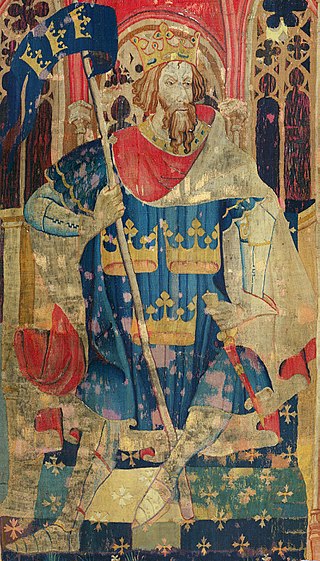

The Real King Arthur?
Historically, there are two prime candidates for the potentially real King Arthur. The first is Artuir mac Aedain, a military general who died in 582 C.E. while fighting the Picts and Northumbrians. It is claimed that he used the Roman fort at Camelon as his base. There is potential that the word Camelon could be associated with Camelot or Camlann, the location where the epic King Arthur perished fighting his archnemesis, Mordred.
Another more favoured and historically-documented candidate is Artorius, a Scottish prince and son of King Aidan, who ruled the Kingdom of Manaan in the late 500s C.E. It is believed that Artorius made his capital at the Old Roman fort of Colania, later known as Ad Vallum (illustrated below) and which is today a golf course. Artorius supposedly ruled the oppressed kingdom of Manau Gododdin during his father’s Dalriadan reign and apparently died in 582 C.E. at the Battle of the Miathi, which the author David Carroll equates with Camlann, which is Camelon today. The only problem with Carroll’s theory is that Artorius was probably born twenty years after the legendary Arthur’s death, although dating any event from the Dark Ages can be quite rusty.
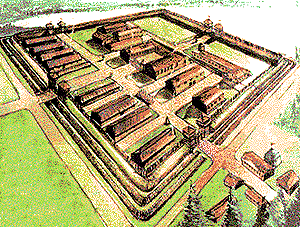

The King and the Golf Course
Although many areas in Wales and England, particularly Tintagel in Cornwall, claim the timeless King as their own, several scholars believe that Scotland’s ties to the possibilities of a real King Arthur are strongest. Again, the main evidence for this belief comes from a list of twelve battles written by the ninth century historian Nennius. The last battle on this list, Camlann, is the place where Arthur died and many claim, particularly Adam Ardrey, that the ninth tee of Falkirk Golf Club holds the answers. Ardrey claims this as the most logical location of Arthur’s death due to the linguistics of the name. According to Ardrey, “Cam” means twisted, while “lann” means land, coming together as “twisted land.” This stands to reason, according to Ardrey, as there were four Roman ditches near the site where the Roman fort had been, twisting the land, which makes up the golf course today. Therefore, this makes Camelon a strong contender for the real location of the Battle of Camlann and ultimately the site where Arthur died.
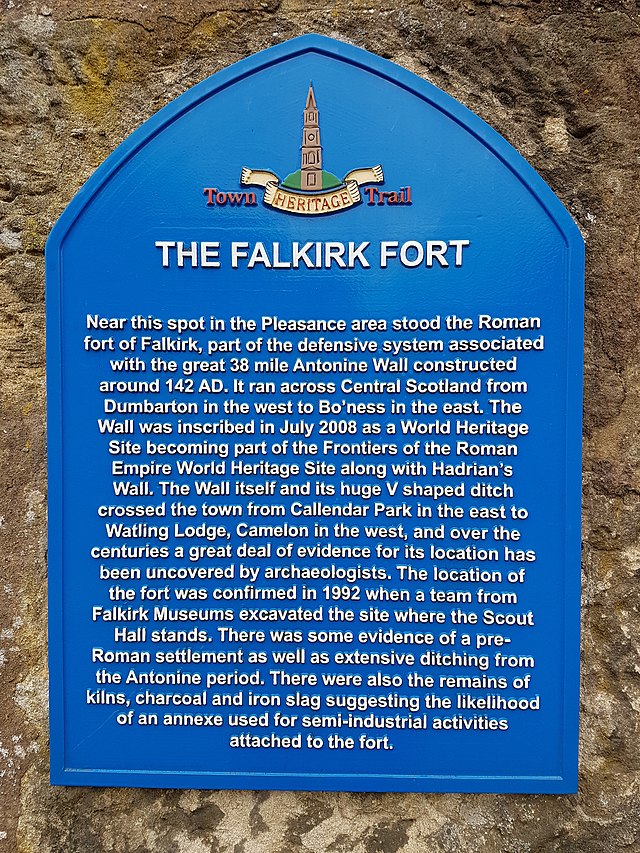

Roman Fort at the centre of Falkirk, where the Battle of Camlann and Arthur’s death may have occurred. Nothing of the fort survives above street-level and the fort was only recently identified by its ditches.
Adam Ardrey is not the only person to make this claim. Frank Carroll, a Yorkshire chiropodist, had also announced that Camelon was the site where Arthur/Artorius died fighting the Picts in 582 C.E. However, there are those who remain unconvinced. Glasgow University’s Professor Leslie Alcock, author of Arthur’s Britain, states that they “have become more and more convinced by my historian colleagues that there are no historically acceptable accounts. It is pretty futile to try and identify where Camelot may or may not have been.” Mr. Patrick Wormald of Oxford University also states that it is “highly impossible” that Arthur had any connection with Scotland. It seems that we may never be able to pin down the Arthurian legend with historical facts but perhaps it is King Arthur’s elusiveness that makes his tale a timeless epic.
By Alexandria Franklin, Hidden Heritage: Camelon and Tamfourhill project volunteer.
